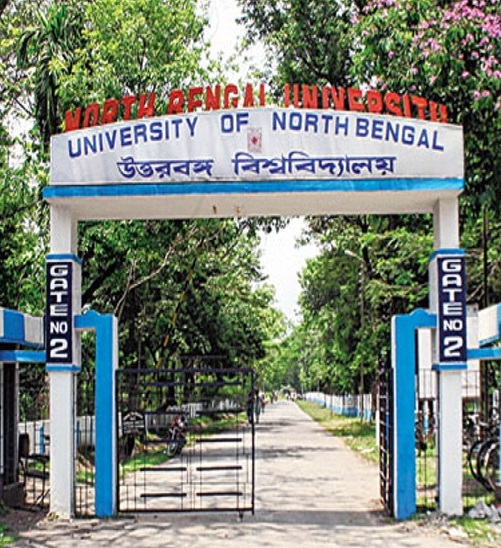Affiliated under University of North Bengal
Estd.: 1942 | UGC recognized, NAAC Accredited
The University of North Bengal was established by an Act of the Legislature of West Bengal in 1962 with the mission “to encourage and provide for instruction for teaching, training and research in various branches of learning and course of study; to promote advancement and dissemination of knowledge and learning and to extend higher education to meet the growing needs of society.”
The University of North Bengal campus covers an area of nearly 315.99 acres of land at the foothills of high Himalaya in close proximity of vast plains around it with a fascinating glimpse of the Kanchenjunga peak, tea gardens and forest cover.
The University of North Bengal has acquired 31.50 acres of land and has already started setting up another campus at Jalpaiguri by the side of the campus of Jalpaiguri Government Engineering College for widening the dimension and scope of Higher Education and Research in one more Centre for Higher Education through modern studies for spreading advancement of learning in various branches of Humanities, Science and Technology in order to reach the people of this region in a bigger way so that they can have better and easier access to Higher Education.
The University of North Bengal, since its inception in 1962, has been fulfilling the objectives of imparting higher education and research to the people of this socio-economically backward area of the country. With the global advancement and requirements in the arena of higher education and research, the University has shouldered the responsibility of dissemination of knowledge by judicious expansion of its role in advanced, non-conventional, applied and job-oriented fields keeping the quality of education at par with global standards at low cost.
The University has taken initiatives in qualitative growth by way of achieving excellence. The Departments are well-equipped with research programmes from various agencies and have received academic distinctions and recognitions.
Located in the lap of Himalayas and situated far off Kolkata the University of North Bengal was established in 1962 with a vision to encourage and provide a congenial space of higher education, in particular to the socially and economically backward students, in the form of instruction, teaching, training and research in various branches of knowledge and to meet the growing needs of this region as the highest temple of learning and to commit to foster education on the basis of democratic values and ethos. With the passage of time along with its enriched capacity structure as a competitive University of national repute, North Bengal University envisions a global centered education system with a commitment to be a part of knowledge society and to provide quality based education to all.
Occupying the latitudinal and longitudinal ranges of 24040’20”[Malda] and 87045’50”E[Malda]to 89o54’35”E[Koch Bihar],respectively,the region includes 6 distinct climate regions ranging from tropical to rival within its span from the Barind plain of Bengal to the High Himalaya. It condequently witnesses an altiudinal range of 21 msl. along the Ganga watered in Malda district upto 8467 msl. at the Kanchendzonga peak in Sikkim. Normal annual precipitation in the region varies from just 1453mm in Malda district to 3508 in Koch Bihar district, crossing 5600mm p.a. in the Eastern hill tracts that neighbour Bhutan. With its proximity to the southermost sweep of the Himalaya and to the Bay of Bengal, the North Bengal region plays a critical role in the formation and circulation of the South West monsoon system. Heavy precipitation and runoff near the Himalayan ranges has led to the undulating topography of the region and to the formation of vast floodplains around the rivers of the Ganga-Brahmaputra interfluve which drain the region. Of these , the principal rivers flow within the Tista basin.
